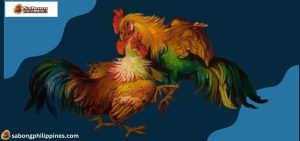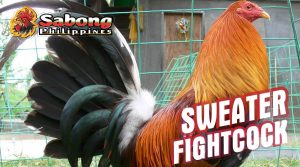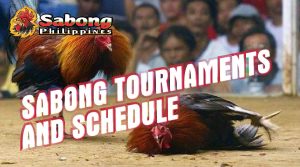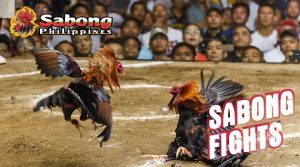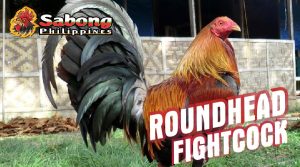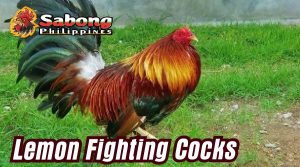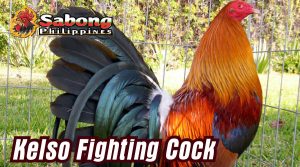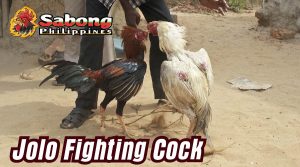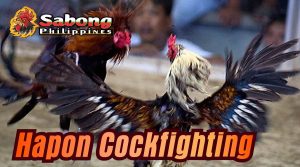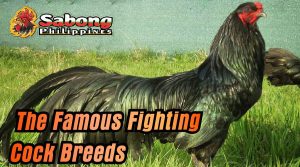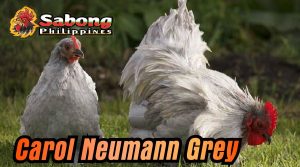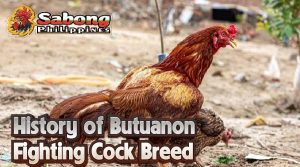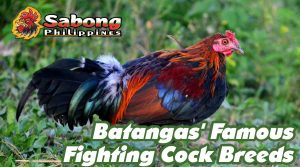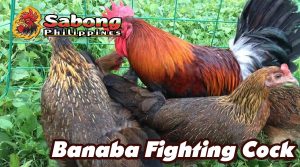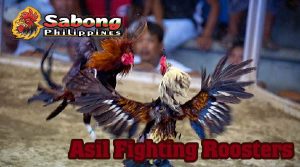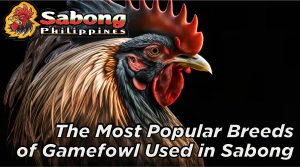Category Archives: Fighting-cock Knowledge
A Comprehensive Look at Fighting-Cock Knowledge
Sabong is a famous sport in the Philippines that involves breeding and fighting roosters. It is deeply ingrained in the country’s history and culture, rooted in the pre-colonial era. The sport is a form of entertainment and a way of life for many Filipinos, particularly those in rural areas. Sabong is also an important industry, generating significant revenue and providing livelihoods for many people.
In this ultimate guide to Sabong Philippines, we will explore the history and significance of the sport, how it is played, its impact on popular culture, the business of Sabong, ethical concerns and animal welfare, Sabong tourism, and the future of the sport in the Philippines. Whether you are a Sabong enthusiast or a curious traveler, this guide will provide you with a comprehensive understanding of the world of Sabong in the Philippines.
History of Sabong in the Philippines
Sabong’s rich history in the Philippines dates back to pre-colonial times. Before the arrival of the Spanish, cockfighting was already a popular pastime among the indigenous tribes. It was a way for them to showcase their breeding skills and honor their gods.
During the Spanish colonial period, cockfighting became more organized and formalized. The Spanish introduced a standard set of rules and regulations, and cockfighting became a popular pastime among the colonizers. The sport also became associated with gambling, with people placing bets on the outcome of fights. When the Americans took over the Philippines in the 20th century, they initially banned cockfighting. However, it eventually became legalized and regulated, and cockfighting arenas started to spring up across the country.
Today, Sabong is a popular sport in the Philippines, with millions of Filipinos participating yearly. It is deeply ingrained in the country’s history and culture and is essential to Filipino life.
How Sabong is Played
Sabong involves the breeding and fighting of roosters, with two birds battling it out in a designated arena. The arena is typically circular and surrounded by a crowd of spectators. The roosters are equipped with sharp blades or spurs on their feet, and the goal is to injure or kill the opponent.
Types of Fights
There are three main types of fights in Sabong, including derbies, hackfights, and gaff fights. Each kind of fight has unique rules and strategies, making Sabong a thrilling sport to watch and participate in.
- Derby: Involves multiple roosters from different breeders competing against each other, with the last remaining bird declared the winner.
- Hackfight: In this type of fight, the roosters fight until one is killed or unable to continue.
- Gaff Fight: Involves the roosters being equipped with metal blades or gaffs attached to their feet.
Rules and Regulations
While Sabong is legal in the Philippines, it is highly regulated to ensure the safety and welfare of the birds. There are strict rules and regulations governing every aspect of the sport, from the weight of the birds to the length of their blades or spurs. Referees oversee the fights to ensure the rules are followed, and violators can face penalties or disqualification. Understanding and respecting these rules is crucial to participating in Sabong responsibly and safely.
- Weight of the Birds: The birds have a specific weight range to ensure they are evenly matched.
- Length of Blades or Spurs: The length of the blades or spurs that the roosters are equipped with is regulated to prevent unnecessary injury or death.
- Duration of the Fight: There is a set duration for each fight, typically ranging from 10 to 15 minutes.
- Referees: Referees oversee the fights and ensure that the rules are followed. They can disqualify a bird or its handler if they violate the rules.
Sabong is a highly competitive sport that requires skill and strategy. The breeding and training of roosters are taken very seriously, with breeders spending years perfecting their techniques. For many Filipinos, Sabong is a pastime and a way of life.
Famous Fighting Cock Breeds in the Philippines
Fighting cocks have a long and storied history in the Philippines, where cockfighting is a popular sport that dates back centuries. Over the years, breeders have developed several unique and powerful fighting cock breeds prized for their strength, stamina, and agility in the ring. Some of the most famous fighting cock breeds in the Philippines include Asil, Kelso, Sweater, Roundhead, and Bulik, each with distinct characteristics and traits that make them well-suited for cockfighting matches.
These are just a few fighting cock breeds in the Philippines. Each breed has unique characteristics and traits that make them well-suited for cockfighting matches. Here are some of the ordinary fighting cock breeds in the Philippines.
- Asil (as Aseel): a breed of fighting cock initially from India and Pakistan, known for their aggressive behavior and stamina in the ring.
- Banaba: a type of tree in the Philippines known for its medicinal properties.
- Batangas: a province in the Philippines known for its beaches, diving spots, and historical landmarks.
- Bulik: a breed of fighting cock known for its striking appearance and strong fighting abilities.
- Butuanon: a breed of fighting cock from Butuan City in the Philippines, known for its speed and agility in the ring.
- Carol Neumann Grey: a strain of fighting cocks developed by Carol Neumann, known for their intelligence and fighting abilities.
- Dom: a breed of fighting cock initially from Cuba, known for their agility and quick reflexes.
- Hapon: a breed of fighting cock from the Philippines, known for their strength and fighting ability.
- Jolo: an island in the Philippines known for its beautiful beaches and historical landmarks.
- Kelso: a breed of fighting cock developed by Walter Kelso, known for their excellent fighting abilities and hardiness.
- Lemon: a strain of fighting cocks known for their agility and aggressive behavior.
- Minor Blue: a breed of fighting cock known for their speed and endurance in the ring.
- Radio: a strain of fighting cocks known for their intelligence and fighting abilities.
- Roundhead: a breed of fighting cock known for their tenacity and fighting spirit.
- Sweater: a breed of fighting cock developed by crossing an Irish pit game with a Hatch gamefowl, known for their aggressive nature and fast footwork.
Standard Terms Used in Cockfighting
Cockfighting is a sport that involves two roosters fighting each other in a ring, often to the death. Like any sport, it has its own unique set of terms and language. Here are some standard terms used in cockfighting:
- Cockfighting arena: A designated area where the cockfighting matches take place.
- Gaff: A small, sharp blade attached to the rooster’s leg to increase its chances of injuring its opponent during a match.
- Handlers: The individuals who handle the roosters during a match, often called “cocks” or “birds.”
- Derby: A tournament-style competition where multiple roosters compete against each other in a series of matches.
- Pitmaster: The person who oversees and regulates the cockfighting matches, ensuring that the rules are followed and that the birds are treated humanely.
- Spur: The natural protrusion on a rooster’s leg used in cockfighting. It can also refer to the metal attachments used to sharpen the spur.
- Wagering: The practice of placing bets on the outcome of a cockfighting match.
The Future of Sabong
The future of Sabong in the Philippines is still being determined, with the industry facing various challenges and changes. One of the biggest challenges is the growing concern over animal welfare and ethical issues in Sabong. There have been calls for more significant regulation and enforcement of animal welfare laws, which could lead to substantial changes in the industry.
In addition, there is also the challenge of changing attitudes towards Sabong among younger generations. Some Filipinos are beginning to question the cultural and social implications of Sabong, with concerns over the violent and gambling aspects of the sport. However, despite these challenges, Sabong remains a deeply ingrained part of Philippine culture and society. It continues to attract millions of Filipinos annually, and the industry shows no signs of slowing down.
The future of Sabong will likely depend on how the industry adapts to changing attitudes and concerns and how it addresses the ethical and animal welfare issues that have arisen in recent years. Nevertheless, Sabong will undoubtedly play a significant role in Philippine culture and history for many years.
Conclusion
In conclusion, Sabong Philippines provides a comprehensive overview of the famous and controversial sport of cockfighting in the Philippines. The guide covers various aspects of sabong, including its history, rules and regulations, types of birds used, and cultural significance. This guide offers valuable information for those interested in learning more about sabong, whether as a spectator or participant. However, it is essential to note that cockfighting is illegal in many countries and individuals.
Take advantage of the opportunity to enhance your knowledge and appreciation of this beloved sport. Visit Sabong Philippines today and dive into the world of cockfighting like never before. Join the conversation, share your experiences, and connect with fellow enthusiasts from around the globe. Take action now and explore Sabong Philippines – Your Ultimate Guide to Cockfighting in the Philippines!

